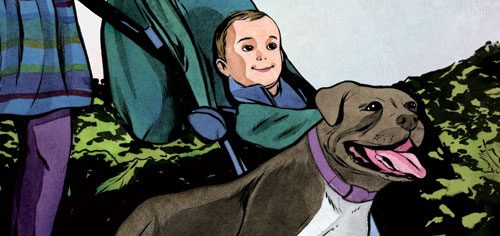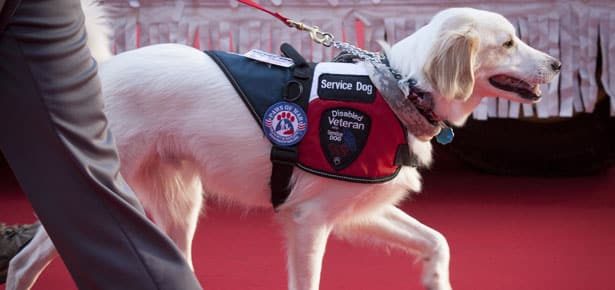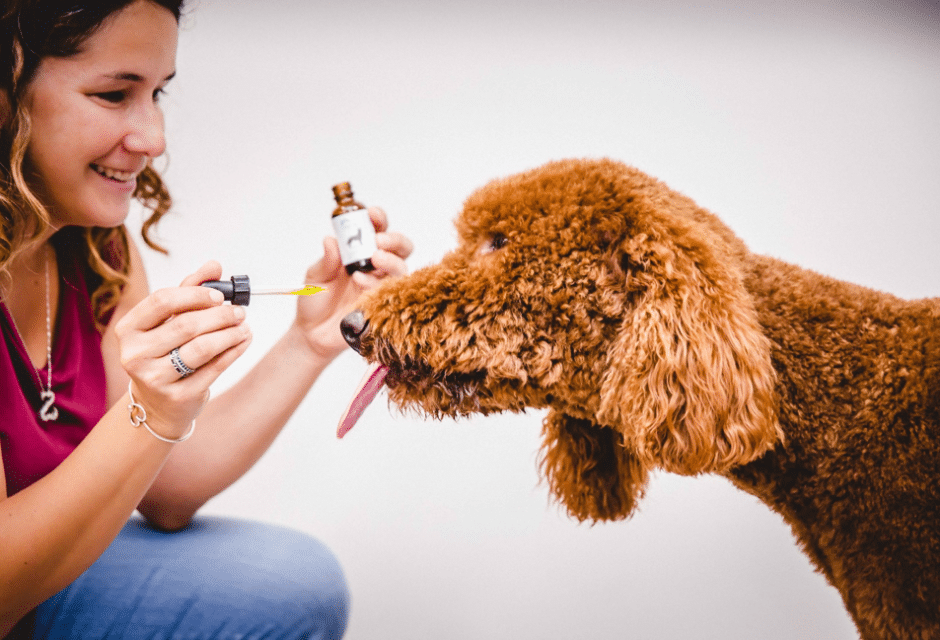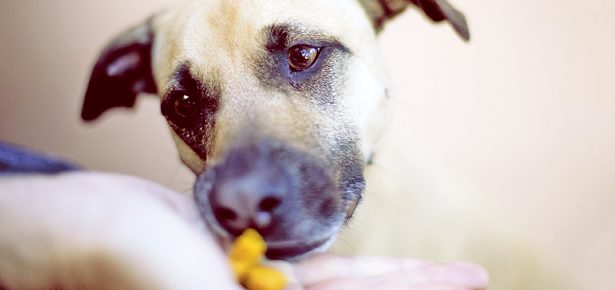

Pregnancy, Babies, and the Family Dog
Who says babies and dogs don’t mix? A behaviourist-trainer-vet’s account of preparing her Pit Bull for an infant’s imminent arrival while reassuring her mother of her sanity.
During a routine email exchange with my mom last month, six weeks before the due date of my first baby, the wise words of my dog training mentor rang loud and clear for the first time. Ian Dunbar had warned me: “Family and friends rarely see you as a real expert in your field when it comes to their personal lives—so don’t expect them to, and try not to take it personally.”
After an honours degree in psychology, over 15 years of experience as a dog trainer—ten of which include writing and public speaking for veterinary and dog training professionals—never mind a veterinary degree, the last line of my mother’s email was a shocker: “So what are your plans for re-homing Charlotte before Jake is born? Just wondering. Love Mom.”
Charlotte is my 11-year-old Pit Bull, whom I adopted as a young pup. She’s a delightful dog provided you are not of the canine species, and has been a wonderful companion. But in the presence of any unknown dog she is true to her breed: a major hassle for even the skilled handler and a frightening canine psychopath to the lay observer.v
Charlotte attended my puppy classes from adoption at 12 weeks until about five months old. However, she was unable to read social signals from the other puppies, and inclined to tackle and hassle puppies relentlessly despite normally effective dog and human intervention. She was the classic backyard-bred Pit Bull: soft and sweet with humans, and downright socially incompetent with other dogs. I did the best I could with her, which was to socialize her well as a young pup so that she could be the finest Pit Bull her genetics would allow and develop a safe bite, a bite that does not inflict damage. I kept up some good doggie buddy relationships for her with carefully chosen peacenik breeds like Labs and Newfies, and found her a Beagle boyfriend as a housemate for many years to keep up the half-baked social skills she did manage to acquire.
Predictably, Charlotte fights with any unfamiliar dog she meets but does no damage, and lives a life rich in human and cat company, and very light on doggie hobnobbing. Truth is, we basically avoid like the plague cold encounters with unknown dogs.
She meets babies and kids now and then, under the control of a head halter, and has never appeared fearful or aggressive towards them. But her body awareness is on par with BamBam from The Flintstones, which is to say, clumsy enough to knock over or scare a youngster. Between her typical bullie overgregarious play style and our provincial breed-related legalities, I have mostly restricted her from meeting unknown children, especially toddlers who are inclined to grab feet and tails—not Charlotte’s favourite type of handling.
My family has always considered Charlotte to be a hindrance to me, requiring housesitter hassles instead of simple doggie daycare or kennel boarding, expensive fencing, and constant vigilance for dogs on the horizon. But they’ve treated her kindly over the years and respected my love and devotion to her nonetheless. That is, until I explained that there were no plans for relocation, that Charlotte was staying put in her home WITH my new baby, and that, despite her dog issues I do not consider her an undue risk to a newborn. That’s when things got a bit ugly.
In one fell swoop I went from professional dog trainer, writer, and veterinarian, worthy of boasting about to friends and family, to “a blindly biased, obstinate, irresponsible parent who will be very sorry that she let her pride put her baby’s life at risk.” Charlotte was instantly reclassified as a potential baby-killer, and no amount of fact-citing seemed to have an impact on their conviction.
Had I countered aggression with aggression, like some traditional dog-trainers might, the conflict would probably have spiraled even further downward. But the years of discipline in gentle behaviour modification taught me that fear-based aggression must not be corked; the cause needs to be identified and patiently remedied through confidence building.
I accepted the fact that my well-qualified risk assessment was wholly unconvincing to worried family, and offered to have “objective” input from world-renowned dog experts who happen to know Charlotte personally. Their reiteration that (1) dog-dog aggression is no predictor of dog-baby aggression, and (2) a well-socialized Pit Bull like Charlotte who shows no signs of concern over children poses no extraordinary risk compared to any other dog of similar size was welcomed and seemed to carry some weight. As did my partner’s 30 years of experience as a veterinarian: he patiently debunked myths of locking Pit Bull jaws, clarified confusion between dog-dog scrappiness and dog-human aggression, insisted that any dog can become predatory towards young children without warning and that NO DOG is 100 percent safe with kids, and reassured them that of the hundreds of families he has counseled similarly over the years, none has reported any tragic consequences.
Three weeks into a steady stream of “objective” information, along with my gentle highlighting of all the other risks that we do not try to reduce to zero, but do our best to mitigate by implementing sensible precautions, and irrational fear was slowly being replaced with reflection and acceptance of the reality of Charlotte and my baby—of dogs and kids in general. Supervision of dog and baby was now joining the rest of the list: baby seats for auto accidents, childproof locks for medicine cabinets, and stranger proofing our kids.
Janis Bradley’s book Dogs Bite but Umbrellas and Slippers are More Dangerous (2005; James and Kenneth), provides a wonderful review of the relative risk of dogs to people in the context of modern society. While the sensationalism of dog-bite reports would have us thinking it is a problem of epidemic proportions, your actual chance of being killed by a dog is one in 18 million: you are five times more likely to be killed by a bolt of lightening! The reality is that dogs don’t actually bite very often, when they do they seldom cause injury, and even when they injure it is very rarely serious. True, they pose a greater risk to children, who account for 10 of the 16 dog-related fatalities each year in the United States, but when compared to other rare causes of death in children it is a wonder dog bites even make the radar.
Prefer hard numbers? Toys, playground equipment, and fivegallon buckets EACH kill more children annually than dogs, and none of these rank anywhere close to the 886 children a year killed by their own family. Comparing dog-bite fatalities to car accident statistics (45,000 deaths per year across ages) shows how absurd it is to fret about Fido when transporting baby around in an auto.
Bottom line is that dogs and kids are a pretty safe bet, and the very rare yet devastating fatal attacks that hit the media are almost exclusively committed by groups of dogs left unsupervised with young children. And there is absolutely no credible data suggesting that Pit Bulls are an exception.
Dogs and kids can be a golden combination with a plethora of health and social benefits, but they do require informed guardians who implement some basic precautions. After years of helping others prepare Fido and family for the new baby, it’s now my turn to walk the walk. Five golden rules sit under my fridge magnet as a daily reminder.
1. Plan for having less time with the dog after the baby is born and transition the dog to a “post birth” exercise/social regimen. Charlotte now has a pet nanny that exercises and feeds her, and will do for six months after Jake is born. Two friends whom she loves will also be spending extra social time with her.
2. Get the dog used to the sounds of babies and their toys. Charlotte has been enjoying chicken wieners to the musical (not!) sounds of crying babies, screaming toddlers, and any other child-related MP3s I can find on-line.
3. Set up baby-free and dog-free spaces in the house. Dogs and young kids cannot be left unattended, so some zoning is needed. I’ve put up gates on both floors and Charlotte is getting used to being restricted from the dog-free sections. She’s growing quite fond of the baby-free zones where stuffed Kongs, fine bedding, and a belly-rubbing nanny have appeared.
4. Review the Pavlov Principle: plan how you will associate the new baby with something that rocks your dog’s world. Just like Pavlov’s dog learned to drool at the lunch bell, you want Fido to get warm and fuzzy over Baby. Jake’s first blanket will go home for Charlotte to sniff, and accompany her all-time favourite dinner: parmesan meatballs on spaghetti topped with liver powder. Yummm!
5. Plan the first meeting of baby and dog, setting everyone up for a successful first impression. We’ll make sure Charlotte has had lots of social time and been well exercised the day Jake comes home. I’ll greet Charlotte on my own first, to let her vent her enthusiasm, and then have someone else introduce Jake bum-first while I sweet-talk Charlotte and give her lots of goodies. She can safely lick Jake’s bottom—there’s nothing sterile about a baby bum—and we’ll keep the first encounter brief but positive.
Ten days from now, I’ll become a first-time mom, and I have nothing but great hopes for my dog and baby bonding well. Charlotte says she’s ready for “poop patrol” duty (a cookie each time you change baby’s poopy diaper quickly turns Fido into an ace poop patroller… salivating at your heels well before your nose could alert you), and my partner, mom, friends, and dog nanny are all coached and ready to help Charlotte adjust safely to our new lifestyle.
While I am hopeful for a smooth transition, I am also well prepared to shift plans if needed. Not all dogs and kids belong in the same house, and if I see signs of trouble, we’ll promptly pursue other options. Charlotte does have two terrific re-homing offers awaiting her if needed, but we’re both pretty sure she won’t have to oblige.
Click here for the conclusion of this article
Join the newsletter and never miss out on dog content again!
"*" indicates required fields
By clicking the arrow, you agree to our web Terms of Use and Privacy & Cookie Policy. Easy unsubscribe links are provided in every email.





